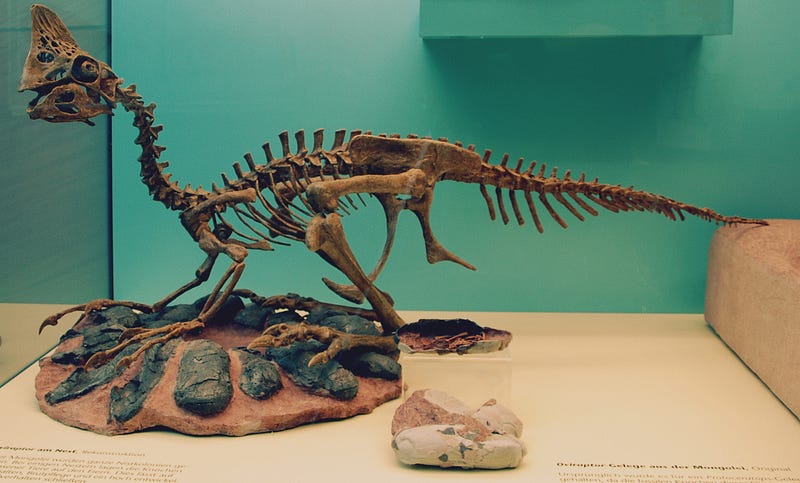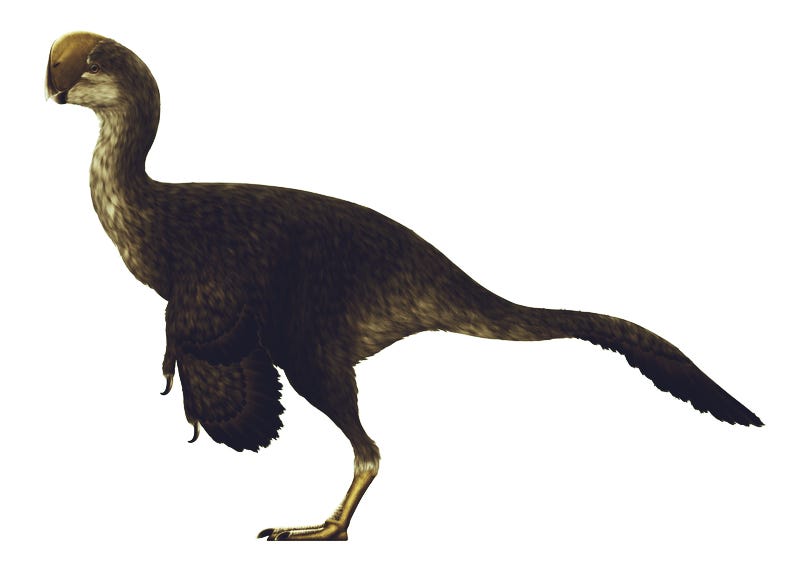A Remarkable Discovery: Dinosaur Parent Sacrifices for Young
Written on
Caring for the Next Generation
In the arid landscapes of Late Cretaceous China, a small feathered dinosaur is found sheltering over its nest, which holds more than a dozen small, oval-shaped eggs nearing hatching. The parent carefully positions itself over the nest to provide warmth and protection. Unexpectedly, a flash flood sweeps through the area, endangering everything in its vicinity. The adult dinosaur attempts to shield its nest with its body, tragically losing its life in the process.
Almost 70 million years later, a diverse group of researchers would uncover the fossilized remains of this dinosaur and its eggs, revealing a significant advancement in the field of paleontology.
Section 1.1 The Oviraptorid Enigma
Despite the inability to determine the dinosaur's exact genus due to the absence of its skull, experts identified it as part of the oviraptorid family. These bird-like theropods, characterized by their hollow bones and three toes on each foot, roamed the Earth during the Late Cretaceous (84–66 million years ago) in regions like China and Mongolia.

A Unique Parental Behavior
Interestingly, this is not the first instance of an oviraptorid found atop its nest. What distinguishes this particular specimen is the presence of fossilized embryos within some of the eggs. At least seven of these embryos exhibit skeletal remains of unhatched baby dinosaurs.
“This marks the first occasion where an adult dinosaur has been discovered sitting atop a nest containing unhatched embryos,” stated Matt Lamanna, curator of vertebrate paleontology at the Carnegie Museum of Natural History. The existence of nearly-hatching embryos indicates that the dinosaur likely incubated its nest over an extended period, resembling the nurturing habits of modern birds rather than merely guarding it, akin to crocodiles.
“This type of discovery—essentially fossilized behavior—is exceedingly rare in dinosaurs,” Lamanna noted. “Although a few adult oviraptorids have been found on nests before, none had embryos within their eggs. This new specimen shows that the young were nearly ready to hatch, proving that this oviraptorid dedicated considerable time to its nest, ultimately sacrificing its life for its offspring.”

Section 1.2 The Misunderstood Oviraptor
The story of the oviraptorid began in 1923 when naturalist Roy Chapman Andrews discovered the first remains during his notable expedition in the red sandstones of Mongolia's Djadokhta Formation. He initially believed that the small theropod had raided another species' nest to feed on the eggs, leading him to name the creature Oviraptor, meaning "egg thief."
It took many years for scientists to correctly ascertain that the nest actually belonged to the dinosaur itself. Instead of being a brutal egg thief as Andrews suggested, these dinosaurs were, in fact, devoted parents that safeguarded their young.

Epilogue: A Testament to Parental Love
The recent discovery of the fossilized oviraptorid guarding its soon-to-hatch young exemplifies that some dinosaurs were indeed caring parents willing to sacrifice their lives for their offspring. This particular specimen from China also provides remarkable behavioral evidence from an extinct species, a rare find in paleontology.
The findings were published in the journal Science Bulletin, with primary authors Shundong Bi from Indiana University of Pennsylvania and Xing Xu, a paleontologist at the Institute of Vertebrate Paleontology and Paleoanthropology in Beijing. The fossil, uncovered about a decade ago in Ganzhou City, Jiangxi Province, will remain in China.
The video titled "Dinosaur Parenting: Care and Nurturing" explores the fascinating behaviors of dinosaur parenting, highlighting the nurturing aspects that modern birds share with their ancient relatives.